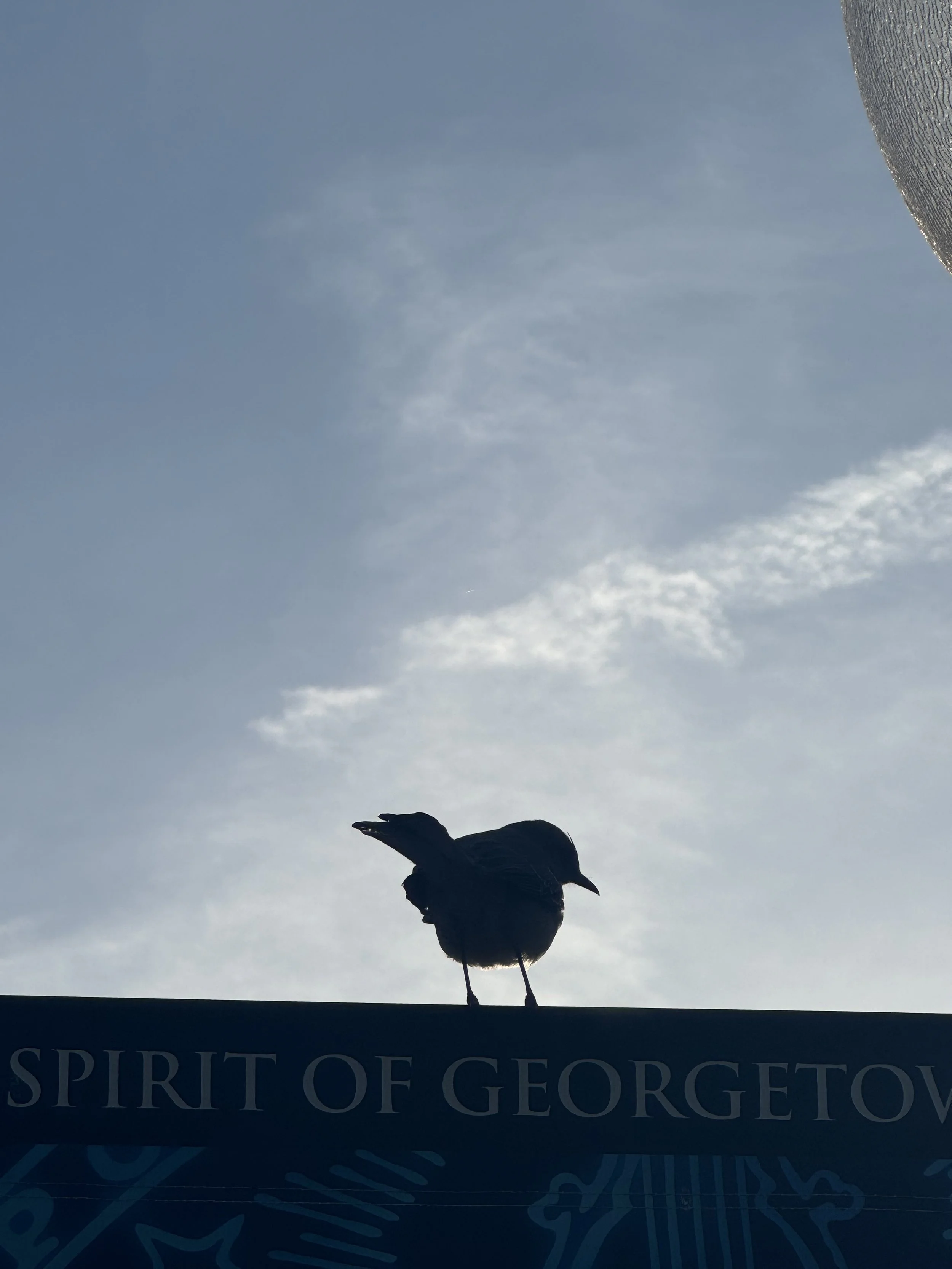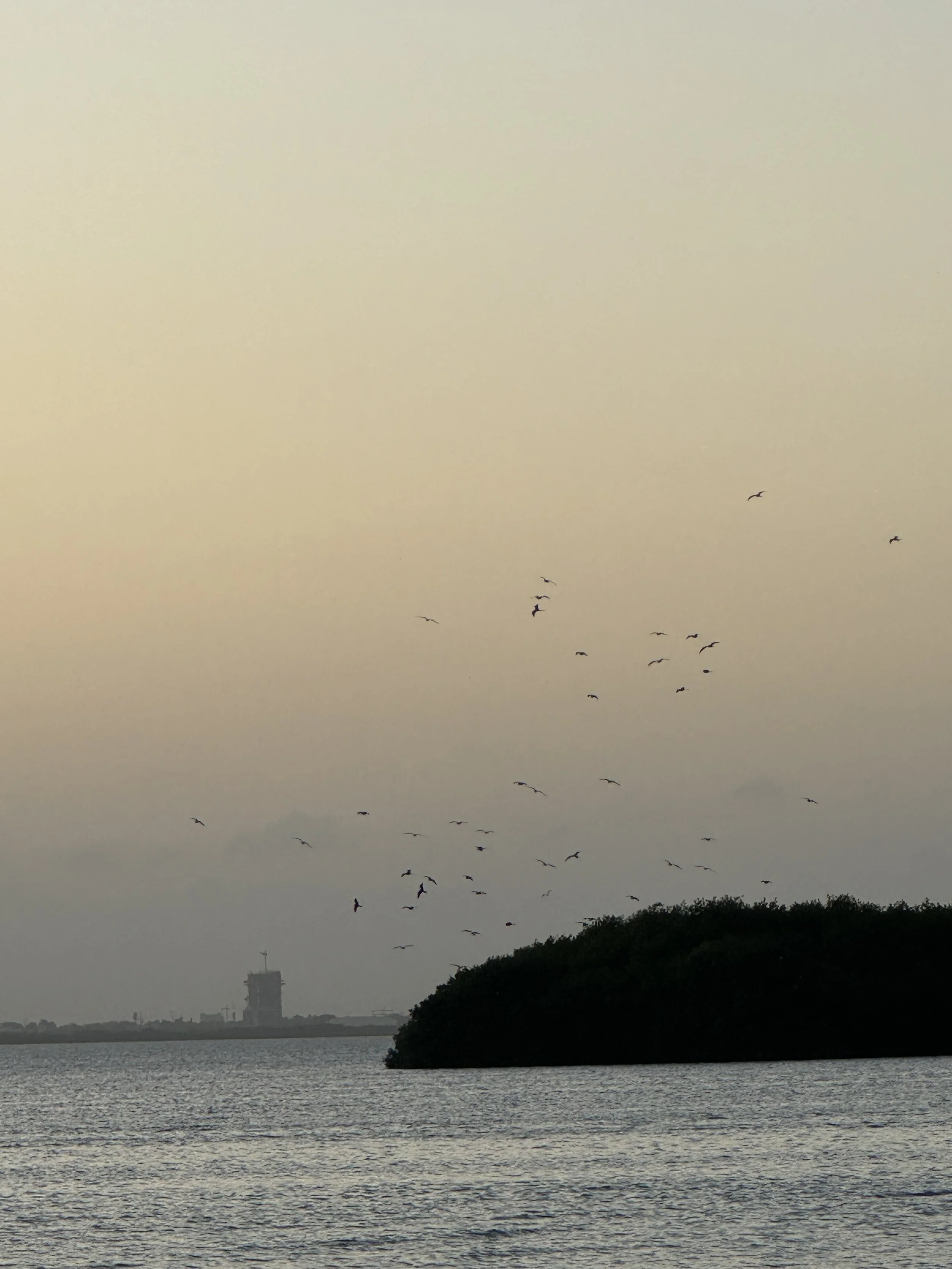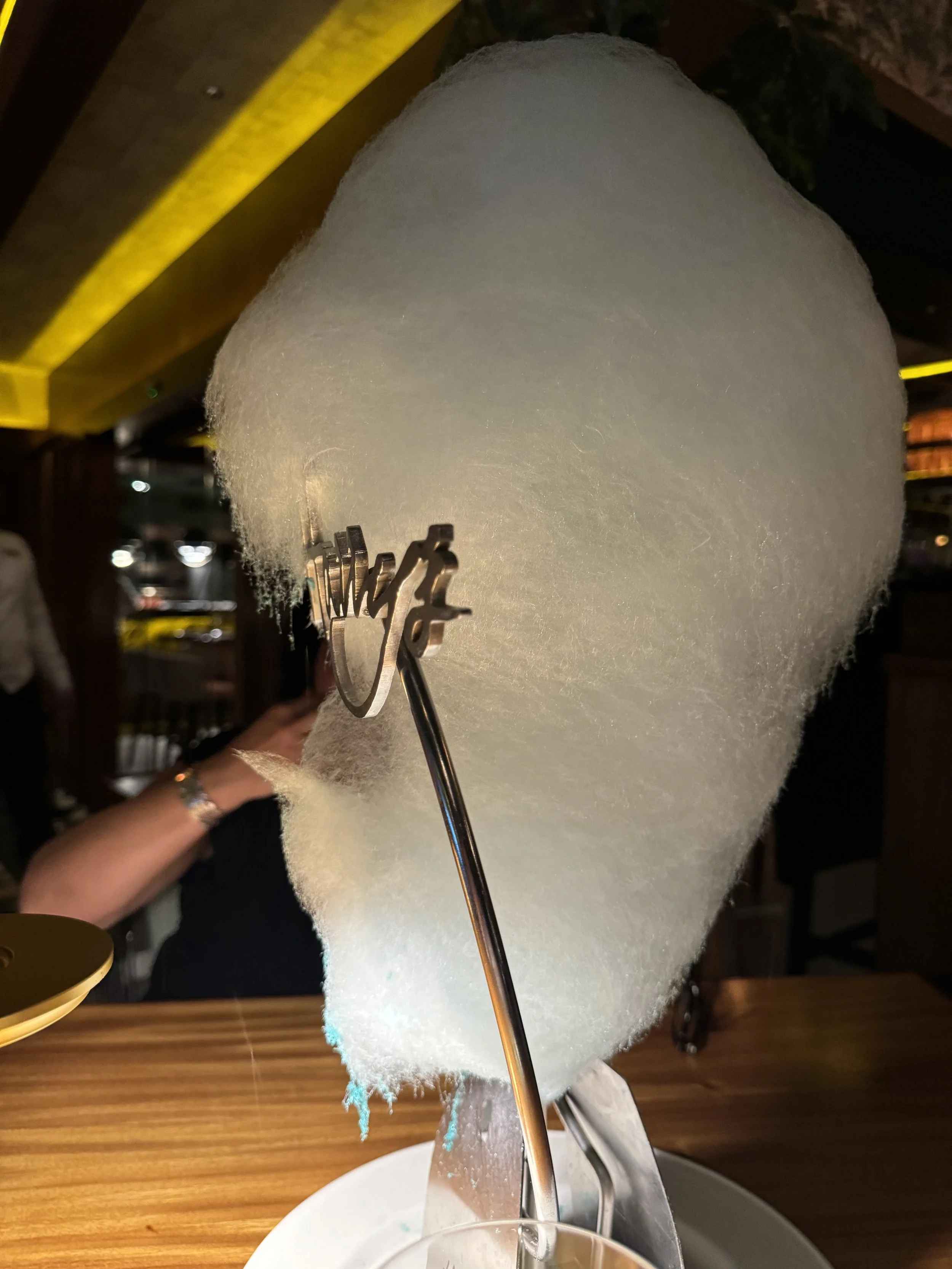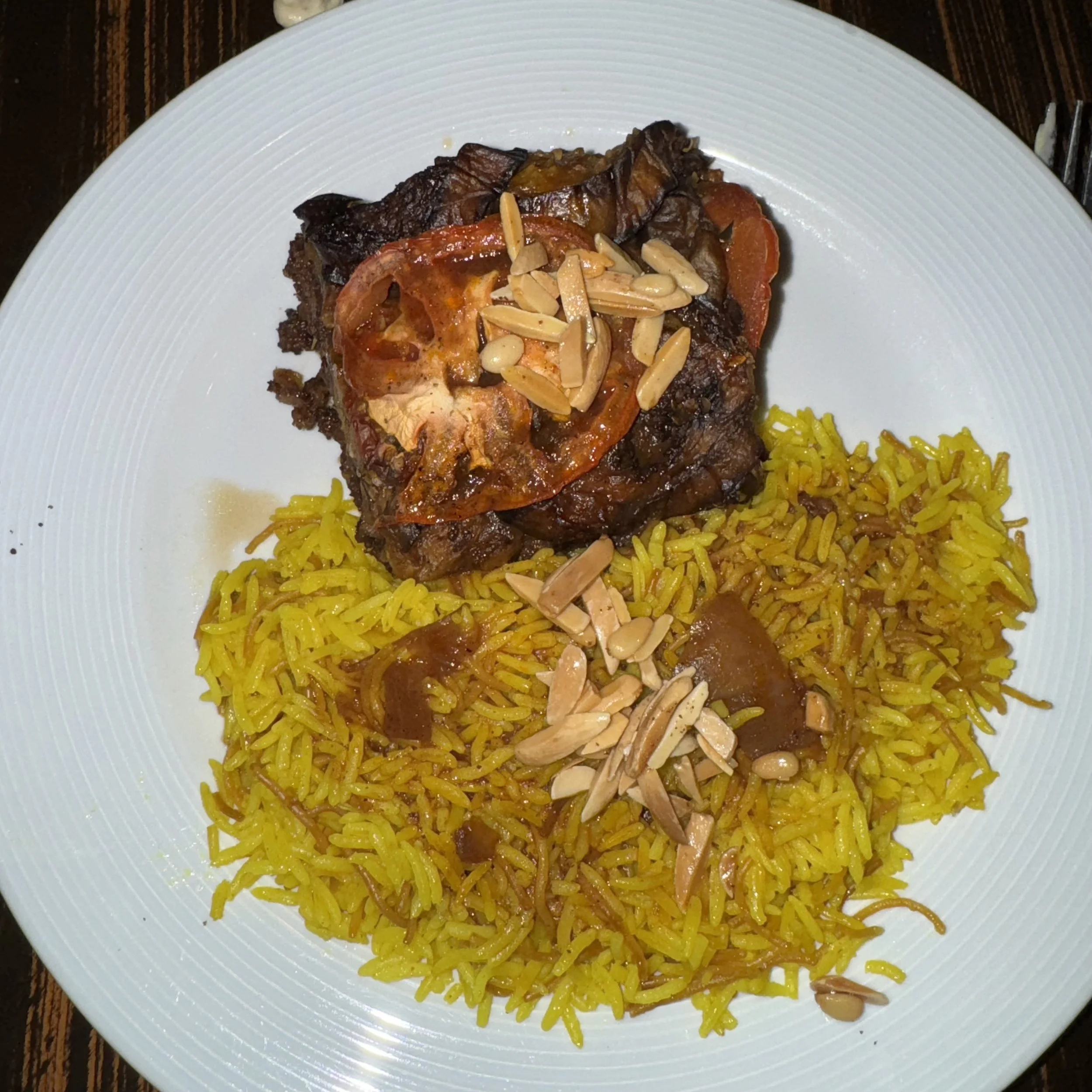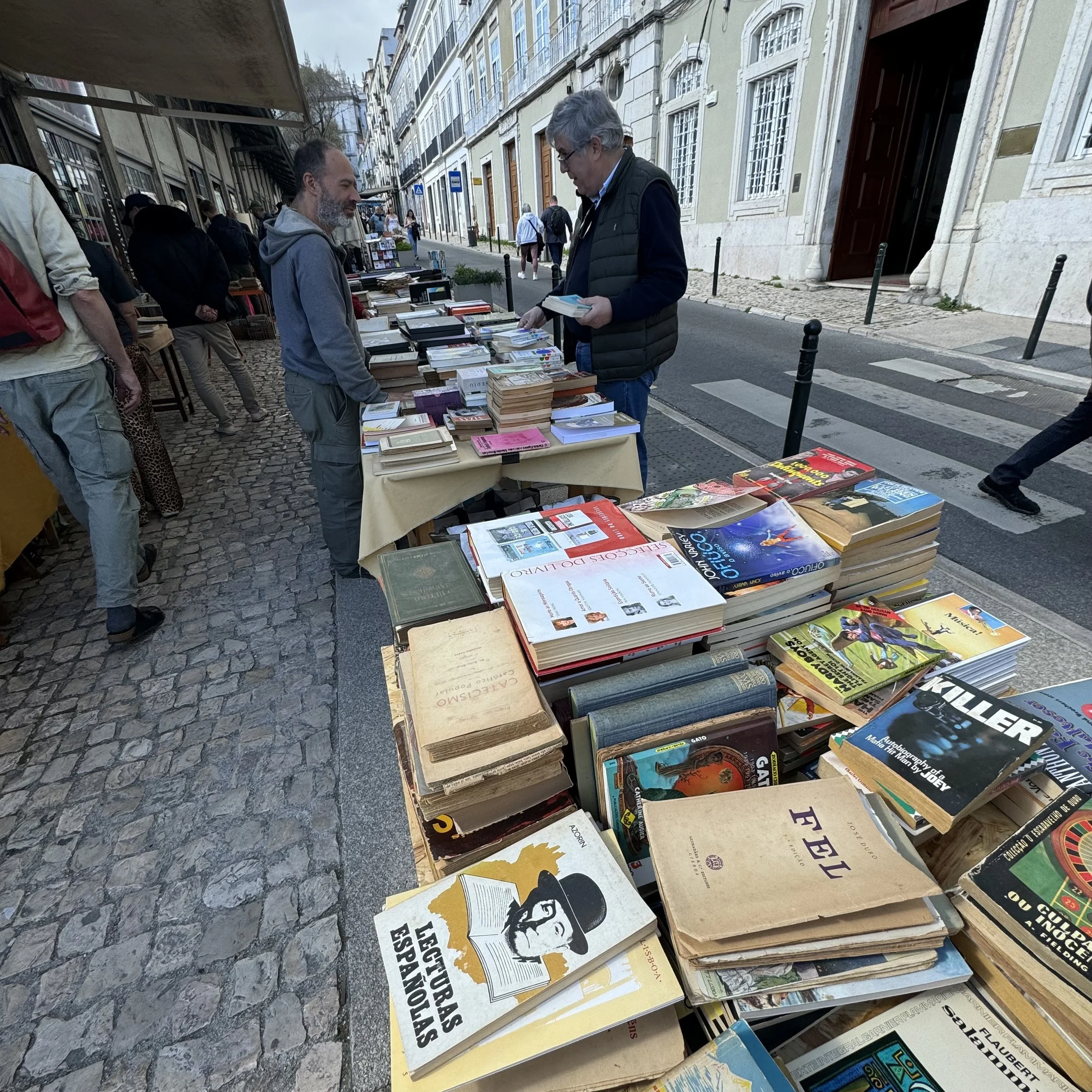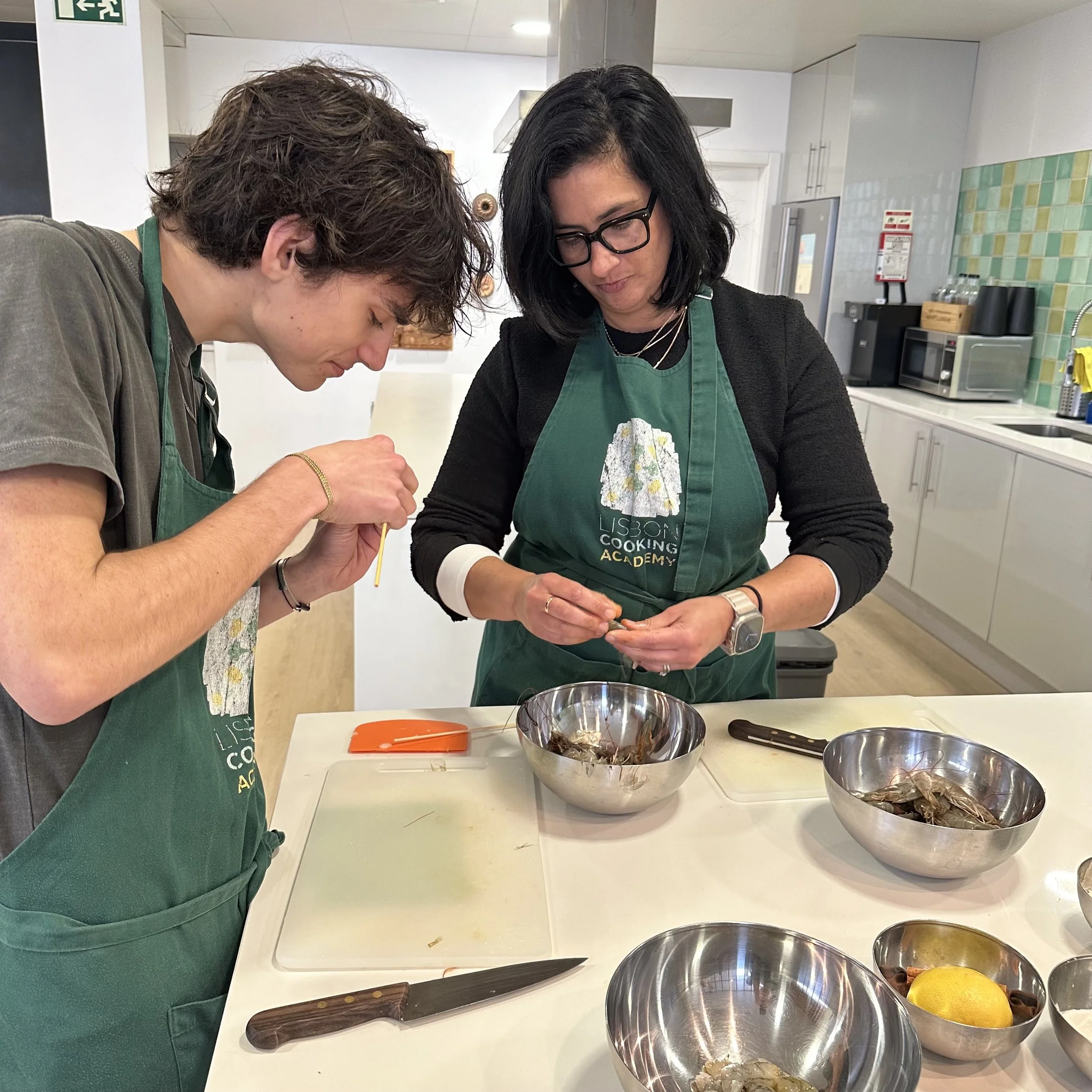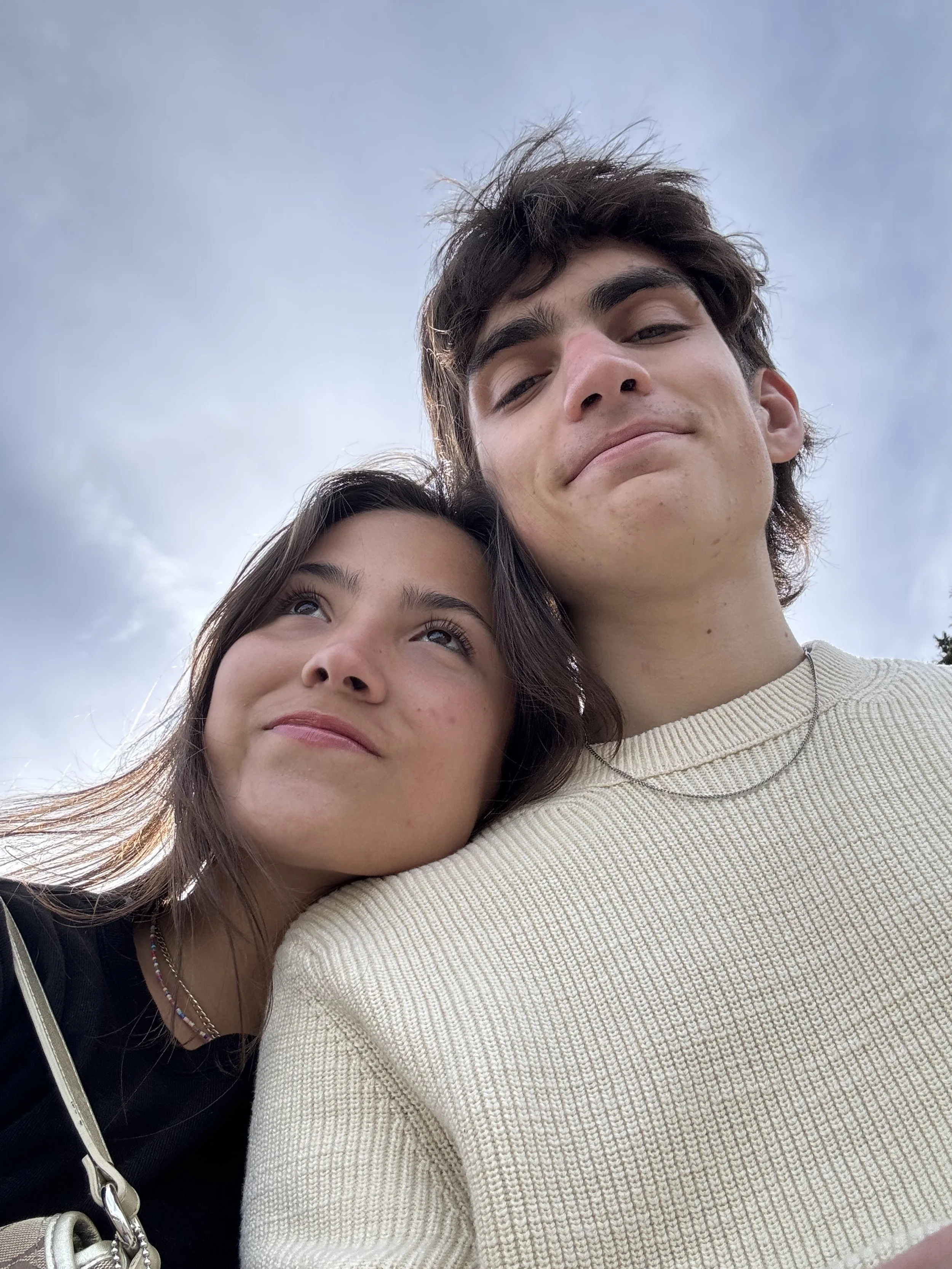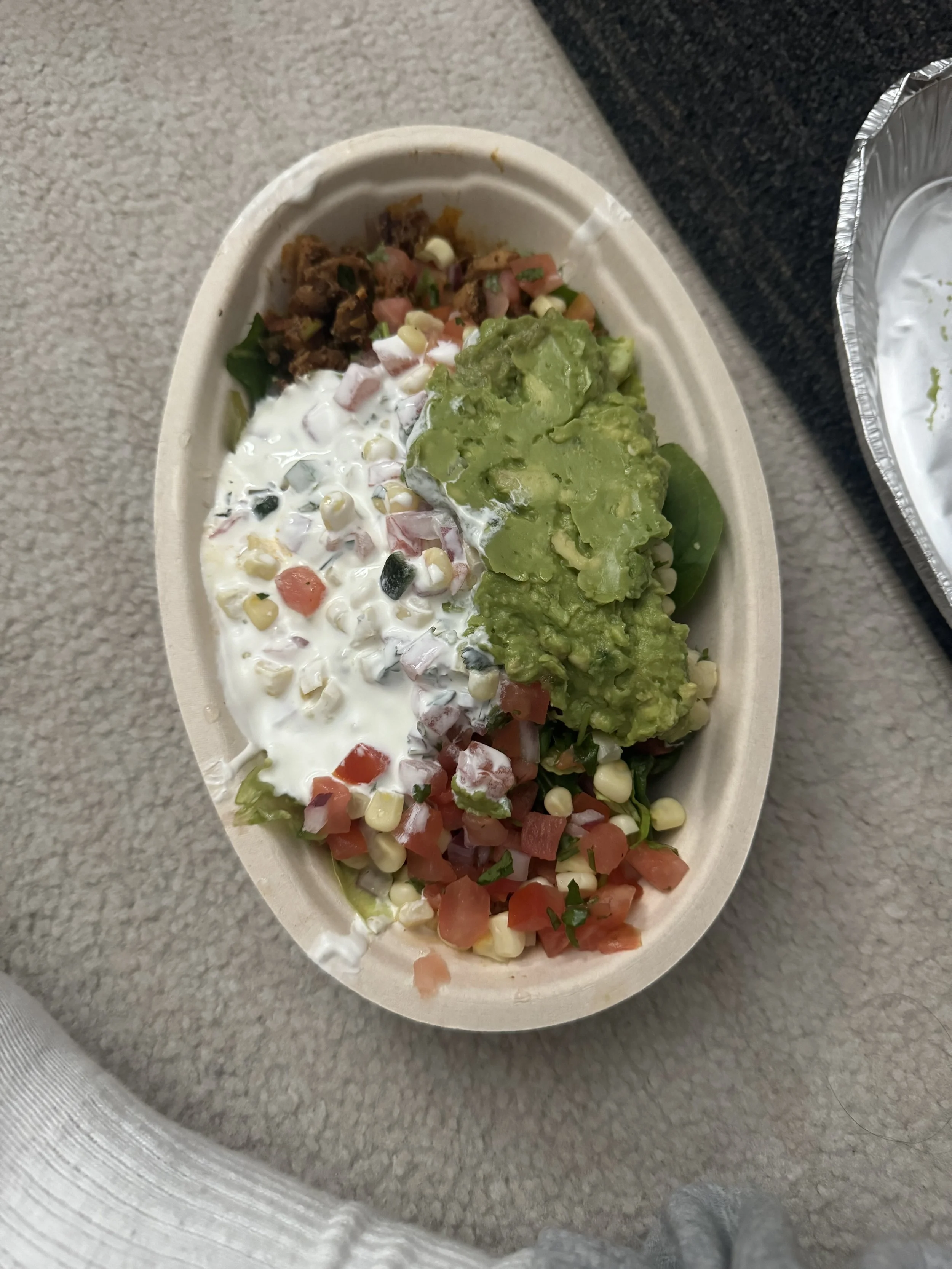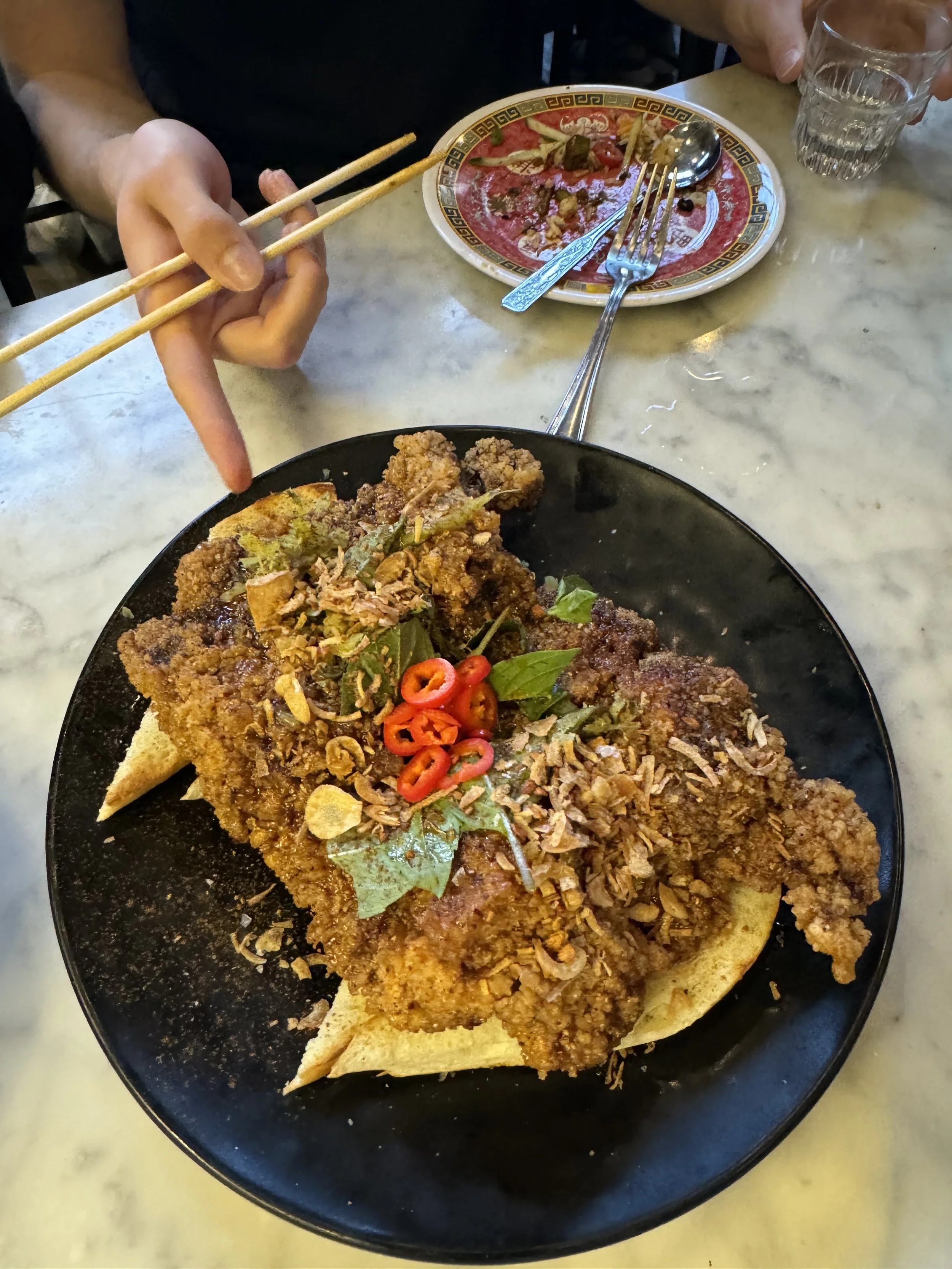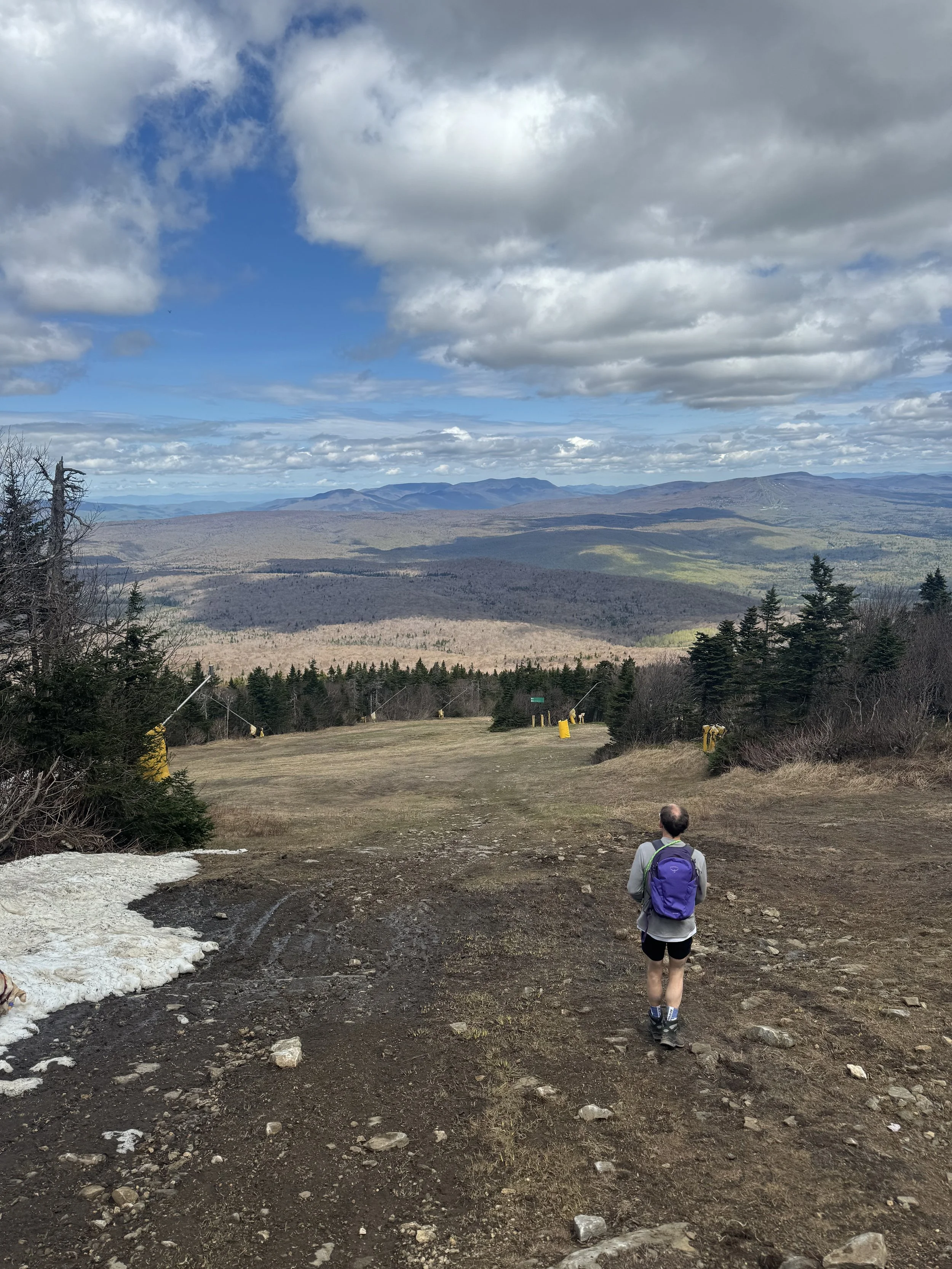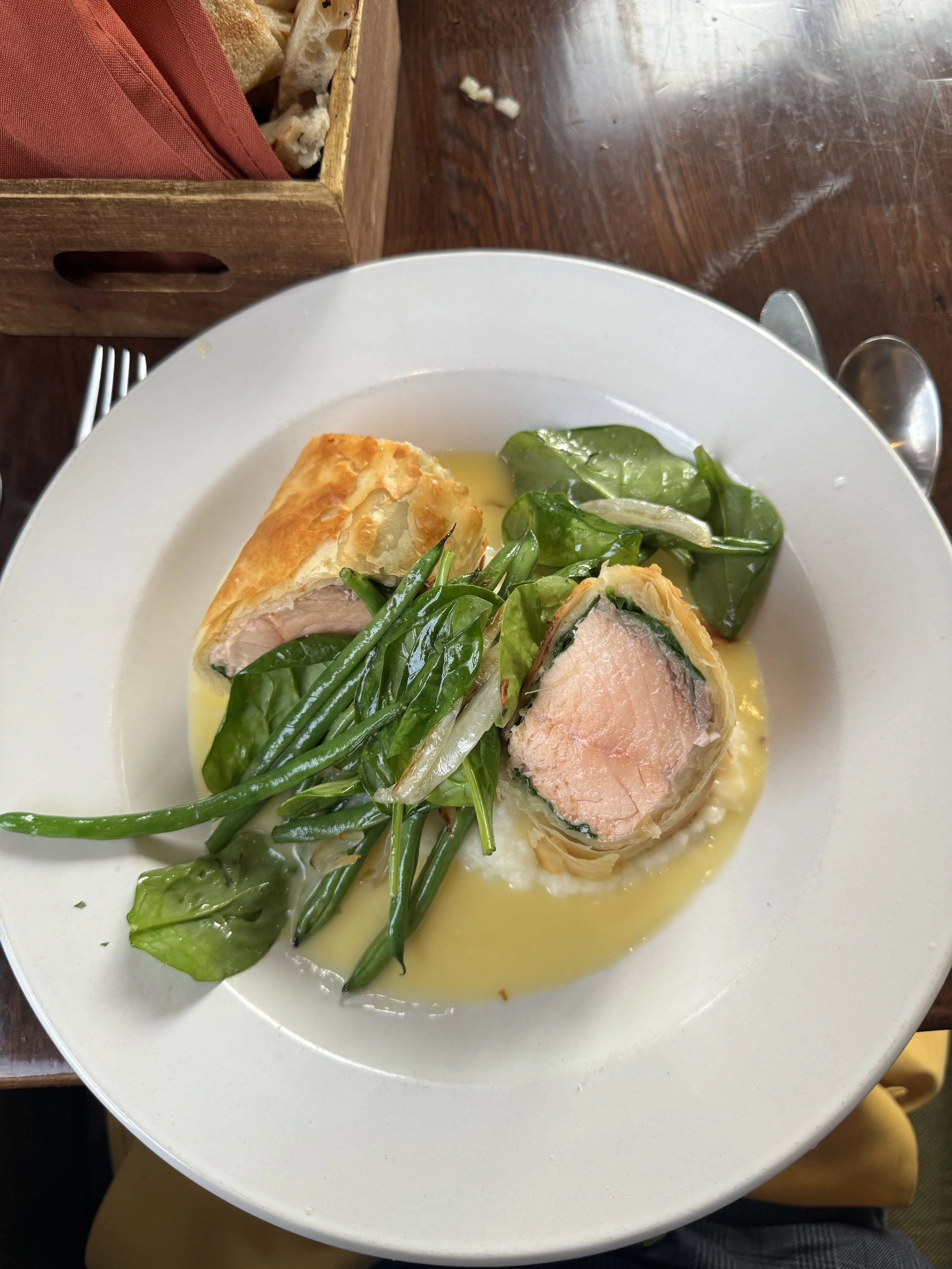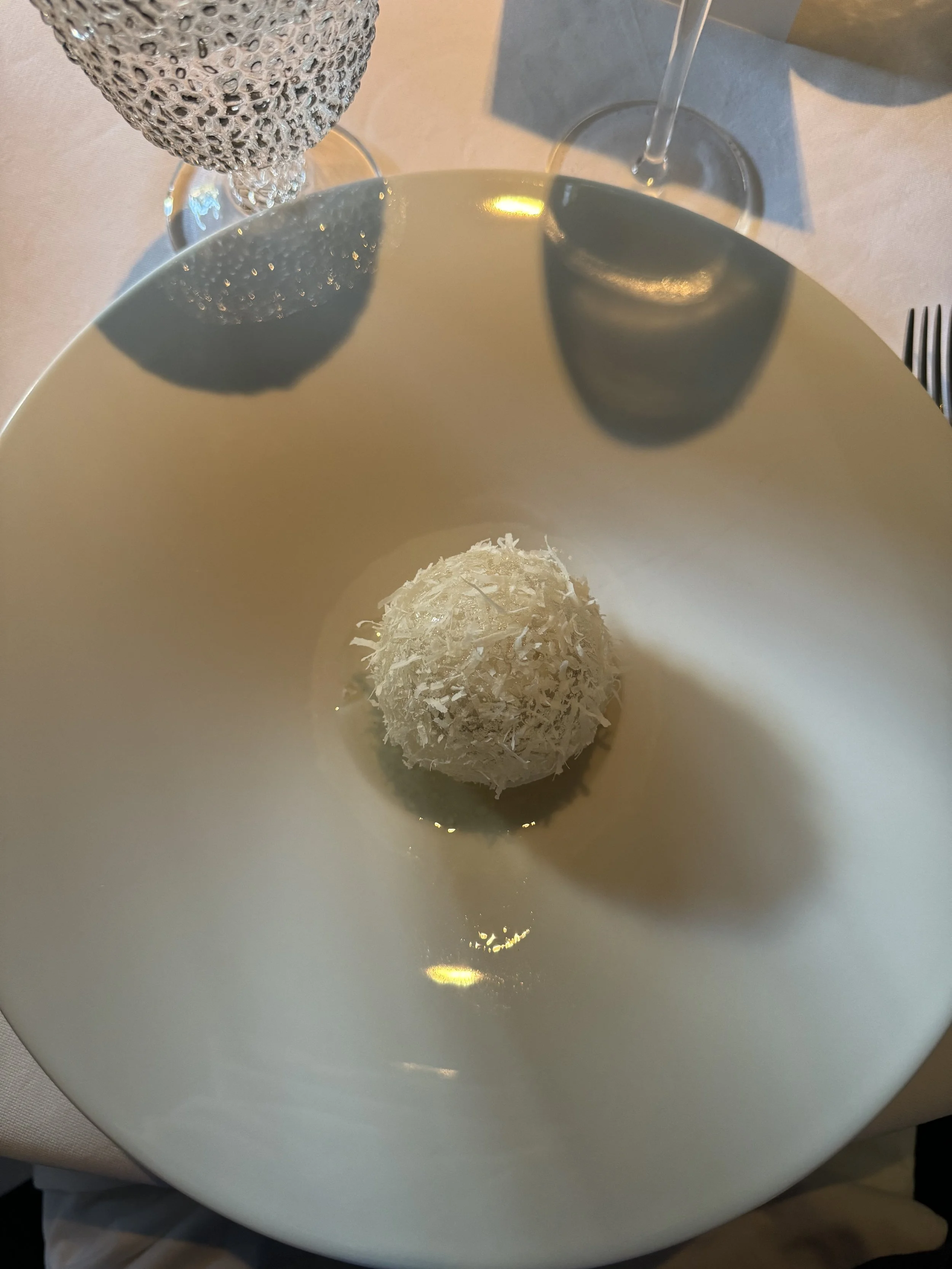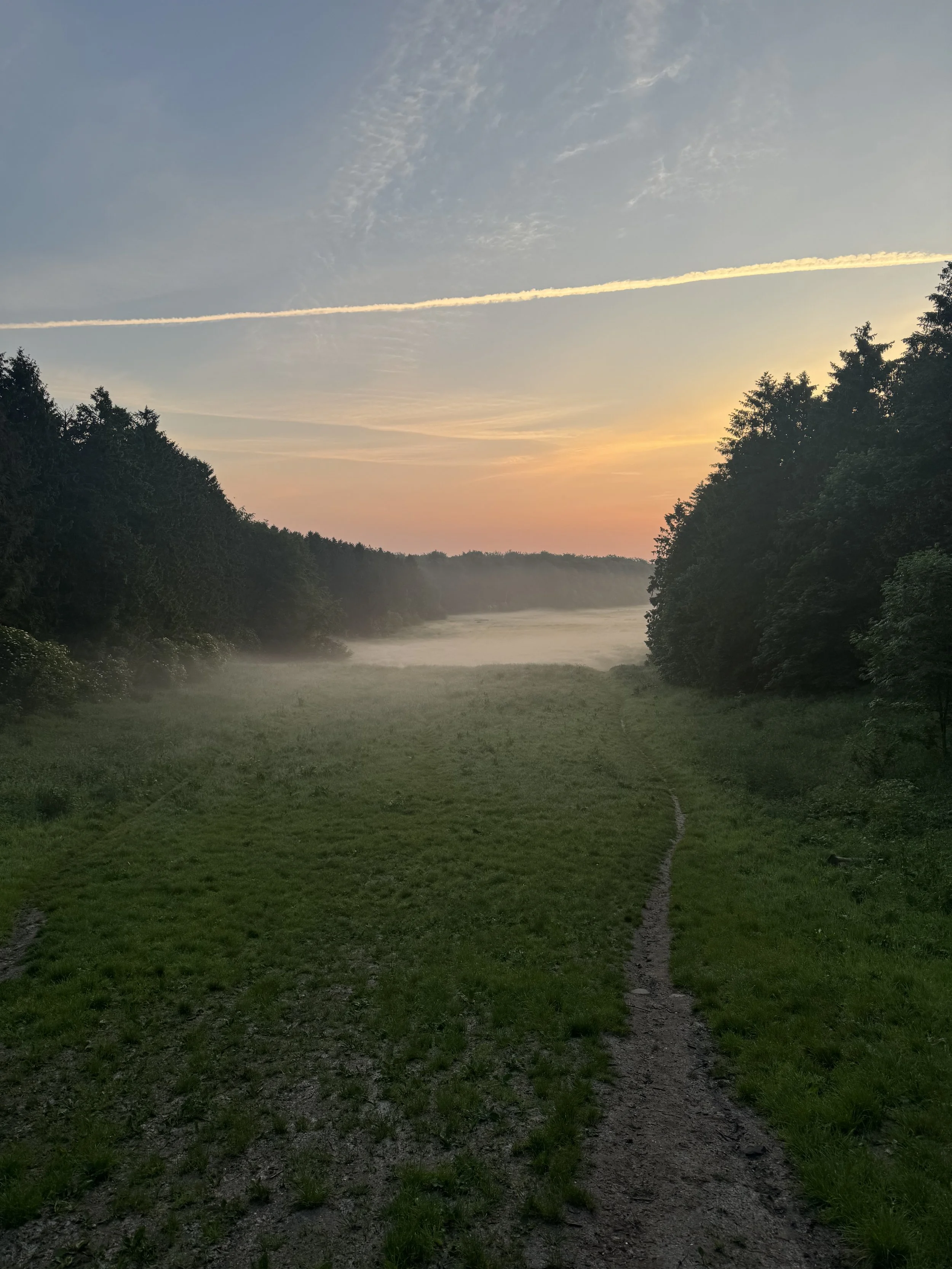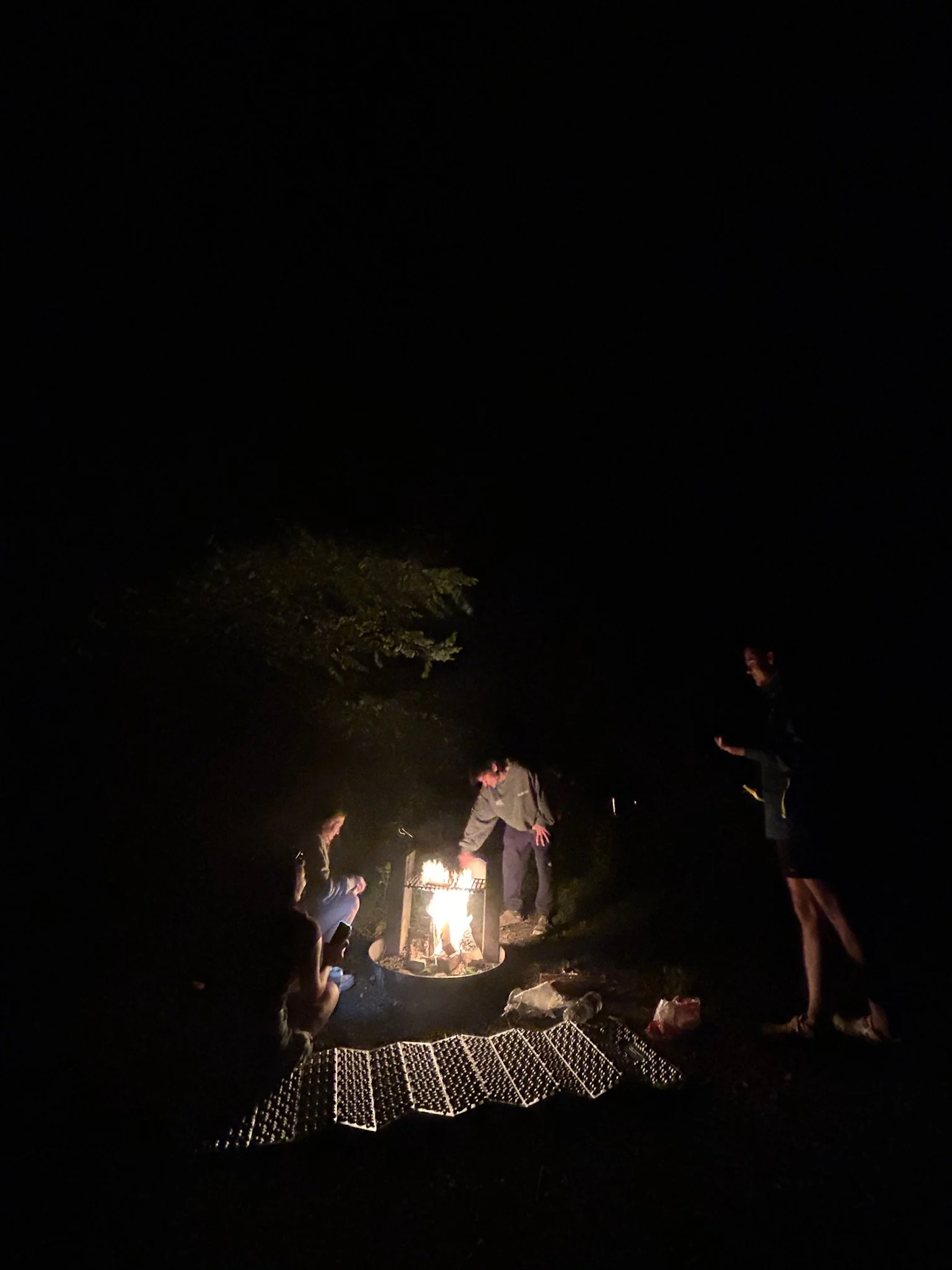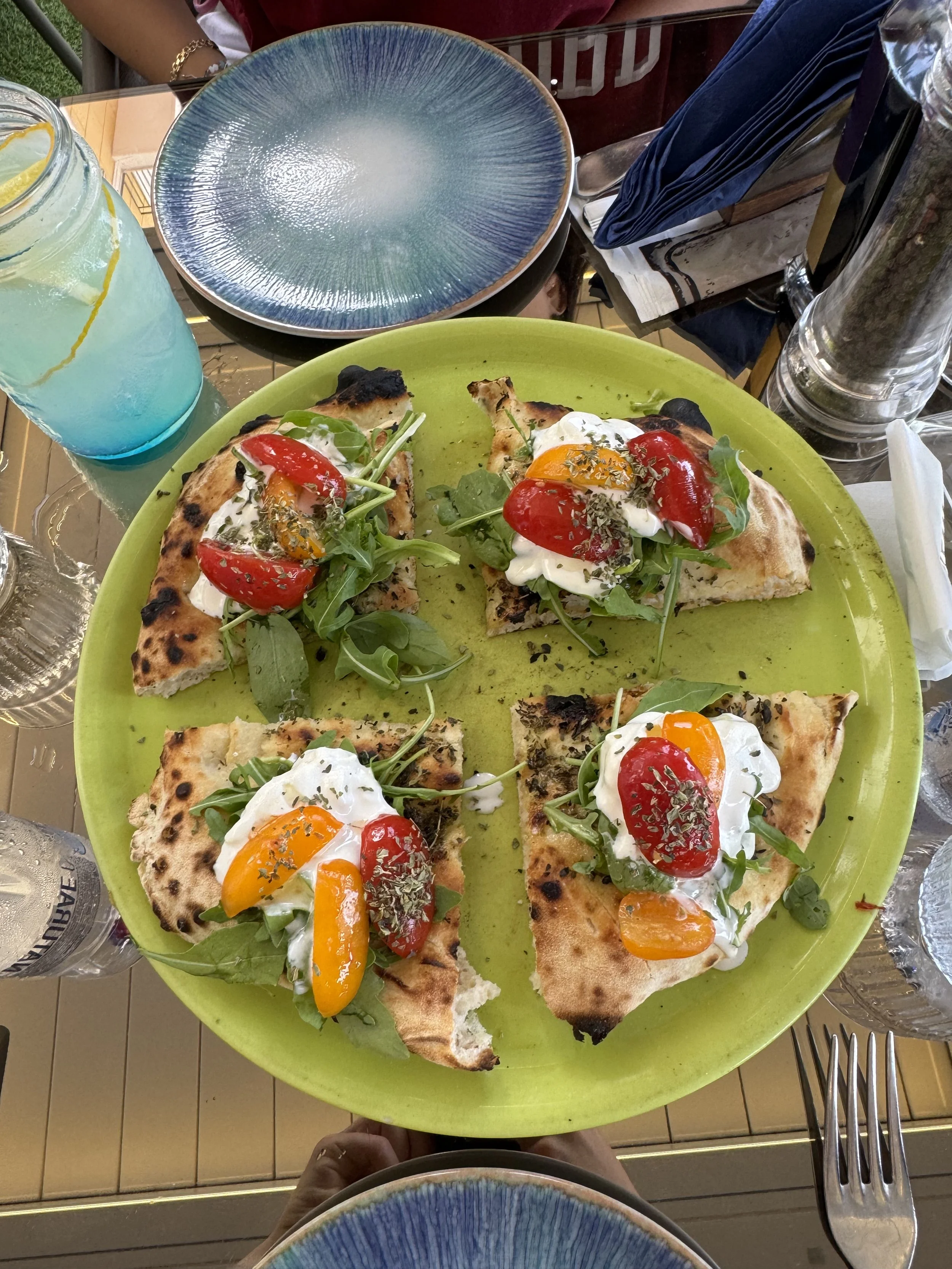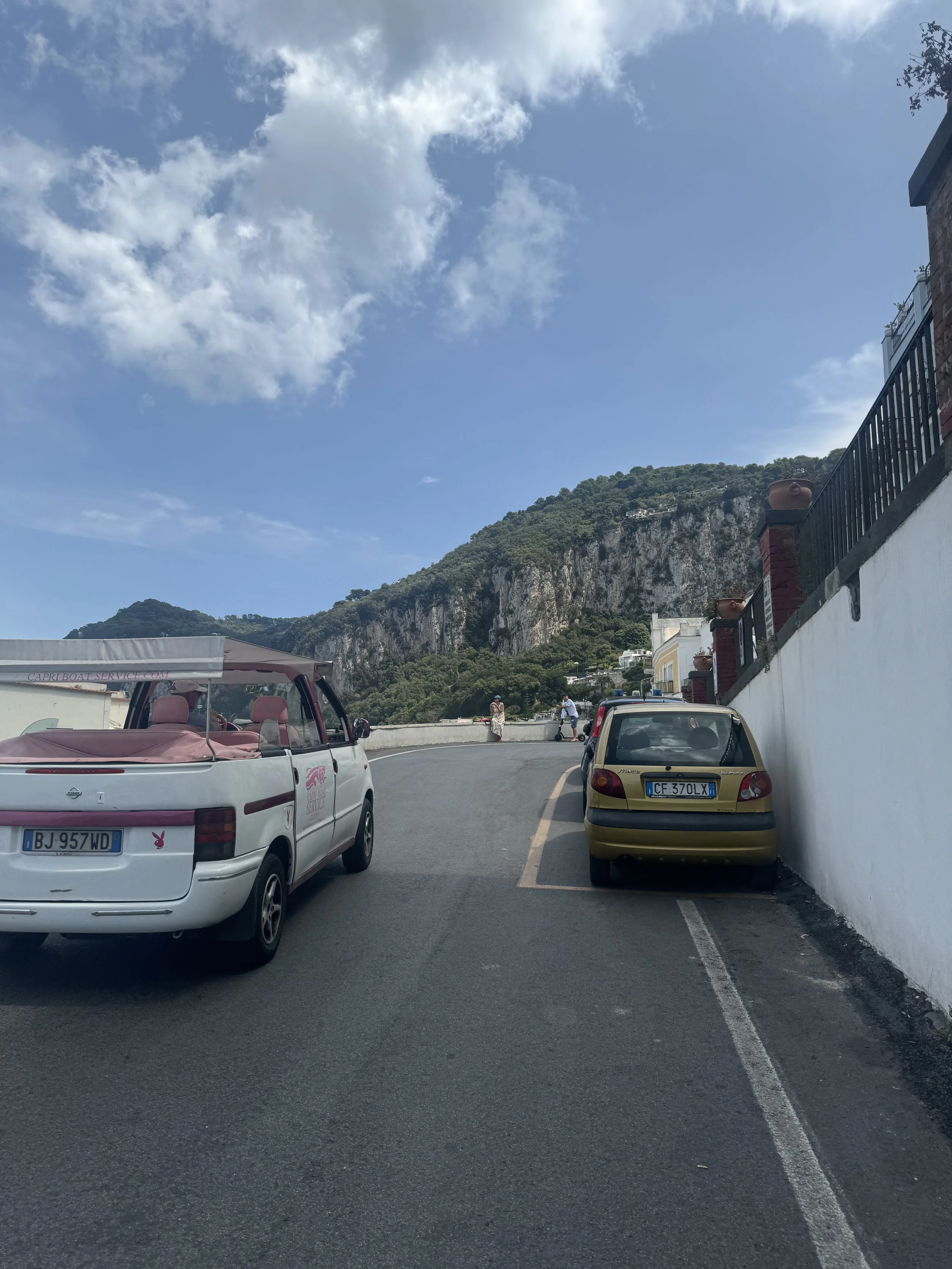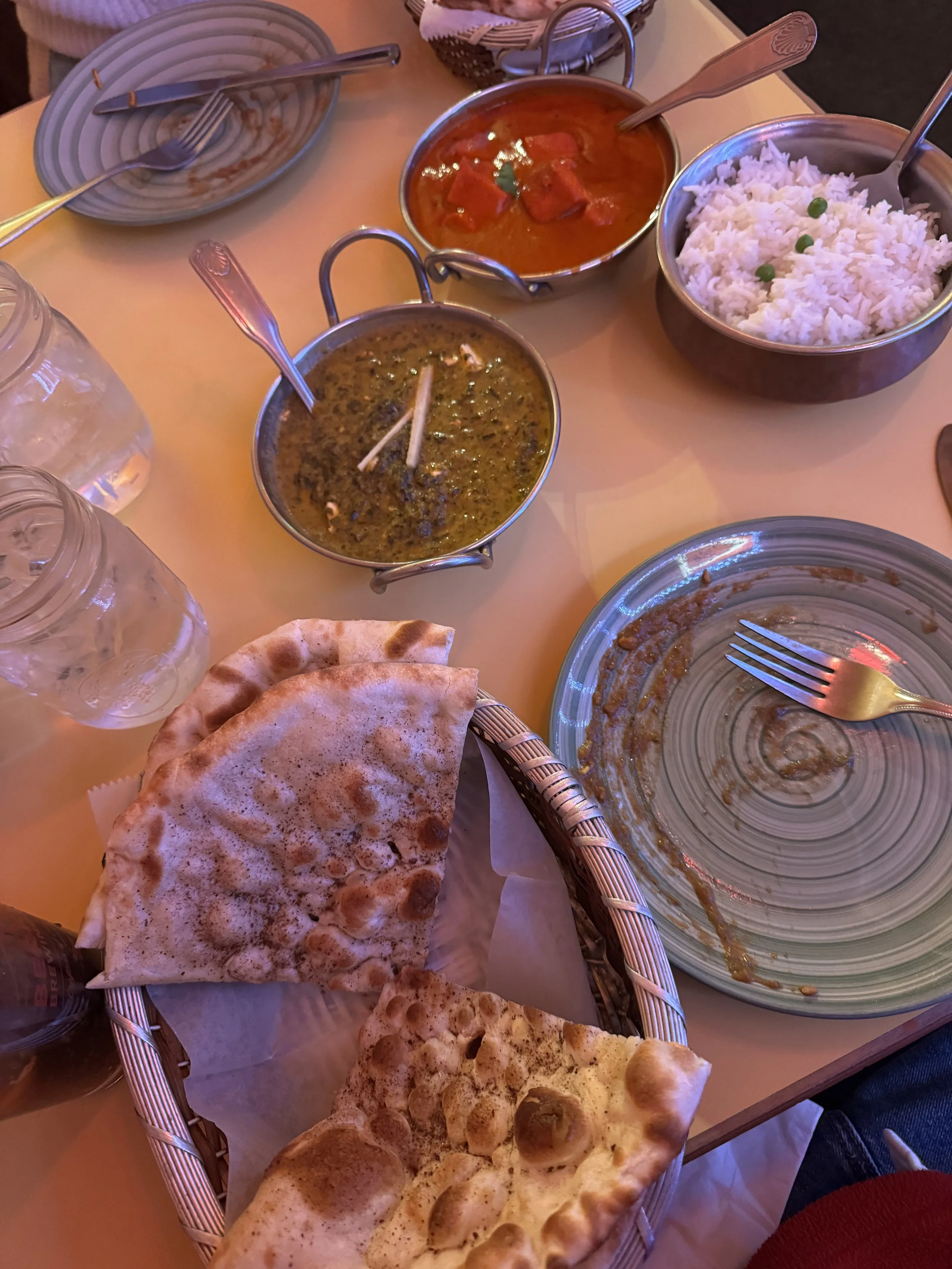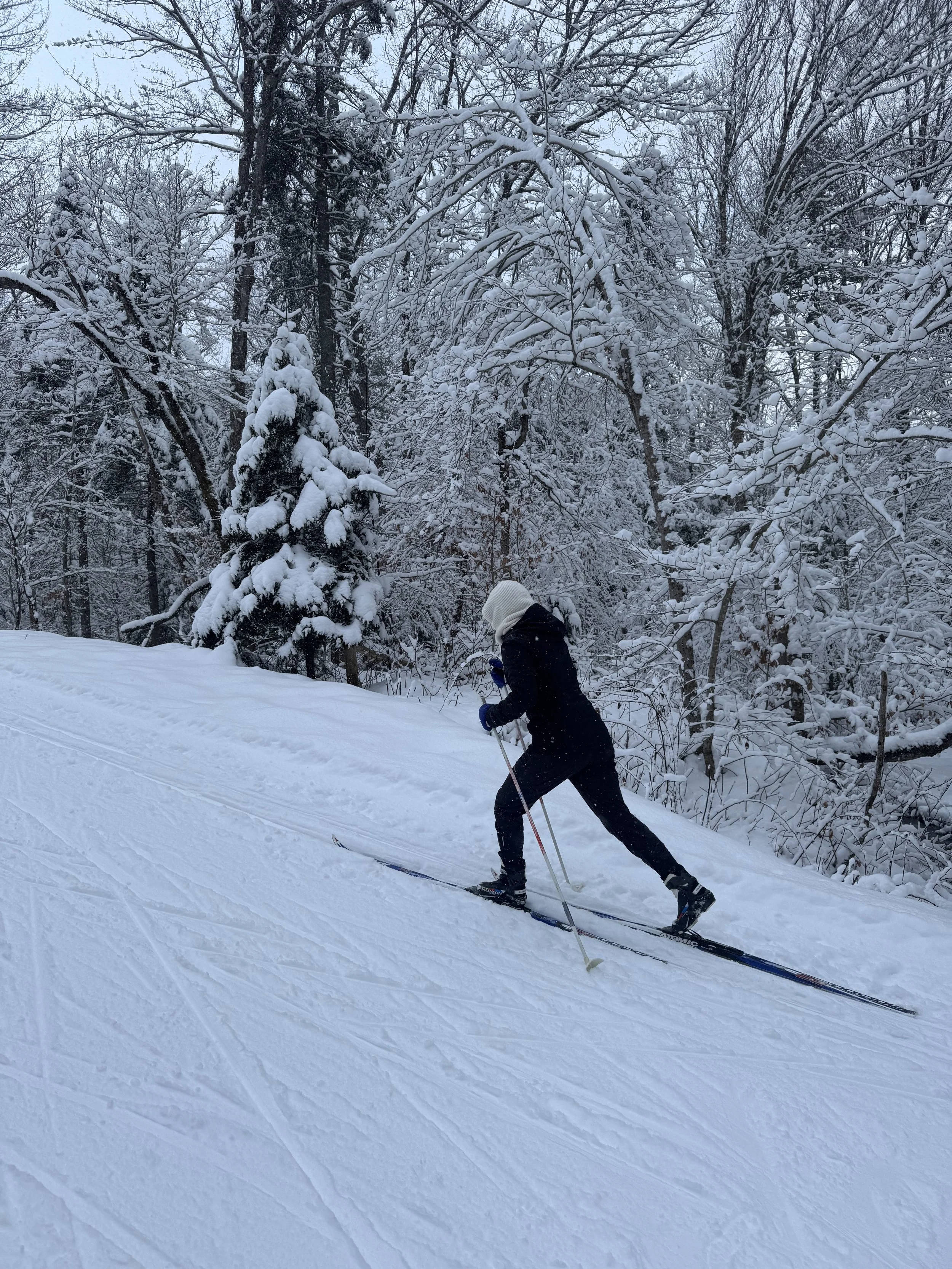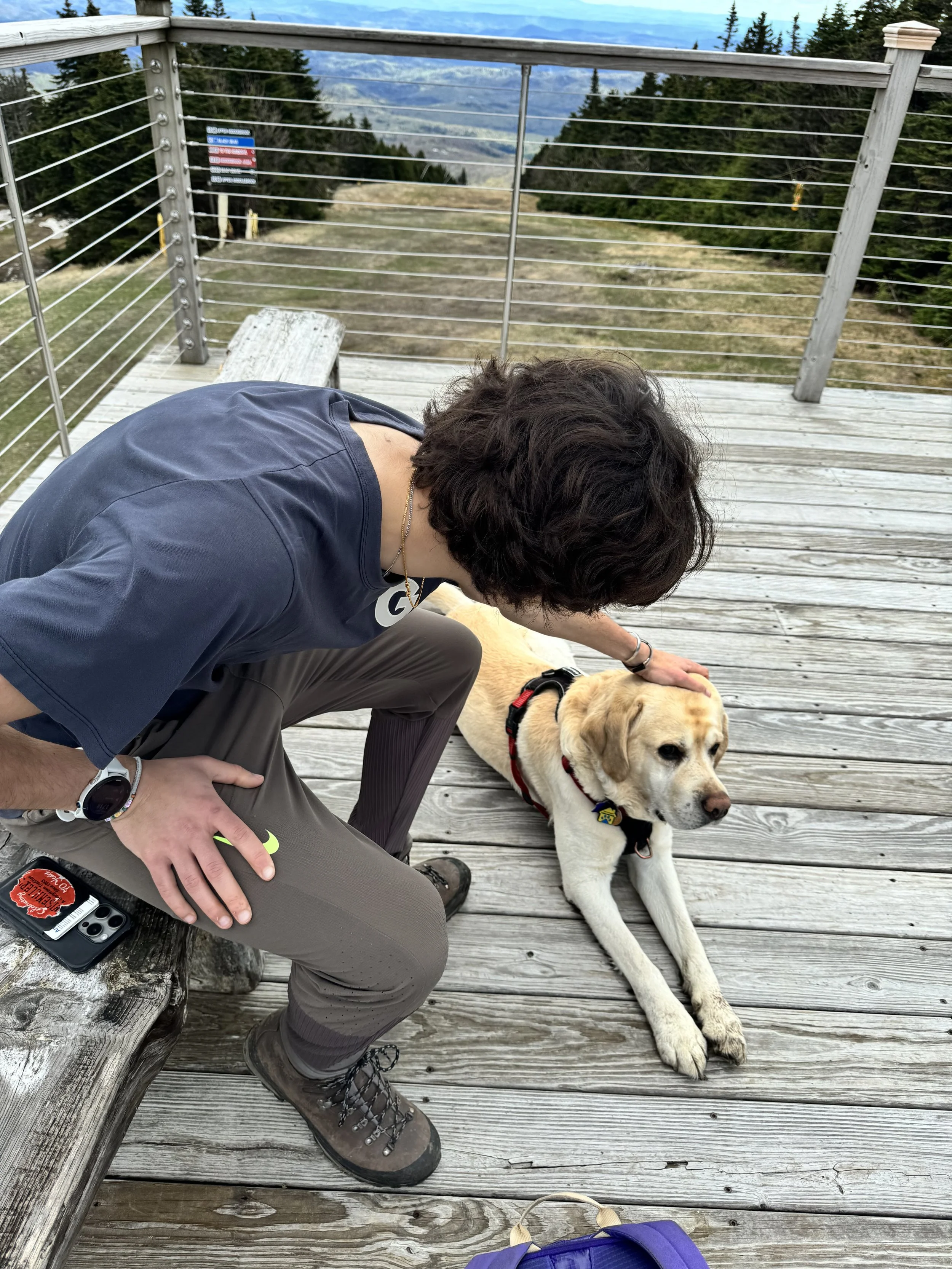2024 in review
I’ve gotten into the habit of writing an end-of-year wrap-up post for this blog. It’s purely an ego-driven activity, but if that’s a barrier for entry, I might advise taking a quick glance at the website title, and imagery, and– well, everything about the page you’ve unfortunately navigated your poor computer to. This is a Chase-fest.
Anyways, year-end reviews. For 2023, I went month by month, did a quick review of all the books I’d read, and, well, that was it. This year, I want to be a bit more creative. So I’ve decided to make the structure more streamlined. I ate a lot this year, and read a decent amount. So I’m going to go through 12 of the 14 books I read since January of 2024, and with each, I’ll share two things: 1. where I was mentally situated at that time of my life (boring, yuck) 2. a meal that reflected my psycho-spatial positioning (boring, yum!).
I’m doing this little song and dance because, honestly, I think that there’s no way to show someone what’s important to me that doesn’t involve an effort to describe the people in my life, the particulars of my daily routine, the food I’m eating, and what I’m reading. I’m making a year-end wrap-up post as a whole because, I suppose, it’s nice to bear one’s soul a bit every now and then. What a waste it would be to keep it all inside, if even for a year.
Last thing before I start. The reason I posted less on the blog this year was that I wanted to write a book. I have a first draft and it’s about a 5/10 on the quality scale. If you have any interest in reviewing a chapter to help me out, please let me know.
1. The Hotel New Hampshire and a Mexican Steakhouse
John Irving is my favorite author. Just as James Baldwin describes love in a way that makes you feel seen even in your less virtuous impulses, Irving describes childhood in a way that makes you feel seen in your adolescent strangeness. The Hotel New Hampshire, like many of his books, describes the entire life of a man growing up in a small town in New England. I won’t spoil too much of the book, but I think the big, important word here is shame — this book focuses on shame and how we can process it. It also focuses on the absurdity (but validity) of family’s importance.
I also started the year with a trip to Mexico with my family. This was the first of many family trips I took this year, and if anything affirms the absurd validity of family’s importance, it's family vacations. When I was on vacation in Mexico, I was quite literally lounging around in paradise, and that was superb. But the only reason it held genuine meaning was that the time spent with my family turned out to be of the absolute highest emotional quality. This was one of those trips where everyone was extremely giddy, as exemplified by our visit to a Mexican steakhouse on the water. There are few better feelings than a giddy, giggly group dinner spent with people you know deeply and trust implicitly. The steak was excellent. We ended with a massive cone of cotton candy, on the house, because they were trying to impress us for a good review. They earned that, and more, by a mile.
2. Walden and Afghani Food from Mama Ayesha’s
The second semester of my freshman year at Georgetown was a bit of an emotional rollercoaster. A stress fracture in my femur prevented me from running, but overall most of my problems were caused by some personal mistakes in the daily habit department. I got far too little sleep for the first few weeks of the year with homework and early-morning workouts, and had to do some serious soul-searching to remind myself that happiness is both a desirable and attainable goal in day-to-day life. Just as my January and February ended up being an up-and-down experience involving spiritual introspection, so too went my experience reading Walden. I have a lot of opinions about this book. On one hand, it’s characterized by an often unnecessary rambling quality which, in my view, takes away from its capacity to capture the profundity of nature’s connection to man (and vice versa). On the other hand, HDT is a master at the art of seeing beyond sensory impulse, and this mastery enables Walden to become, for all its flaws, a truly inspiring description of the way that nature can touch us.
walden pond, concord MA
“Mama Ayesha’s,” an Afghani restaurant in D.C., has little to do conceptually with HDT’s connection to nature. The thread that connects my meal at Mama Ayesha’s with my experience with Walden is that both were made more meaningful by the fact that they enabled a pause at an otherwise hectic time in my life. The food at Mama Ayesha’s is flavorful and well-portioned. We had an excellent pita starter. I enjoyed what can essentially be described as a beef kibbeh and eggplant lasagna, and this dish definitely filled a “hearty food void” which had been growing in my life with the monotony of the dining hall. But, even more importantly, this meal jump-started a crucial friendship, thereby representing a starting point in one of the year’s many new threads of connection. As Walden shows us, threads of connection are pretty important.
3. The 90s and a Cooking Class in Lisbon
Chuck Klosterman is an American historian and author known for deep dives into generational experiences. The 90s is an excellent book in which Klosterman lays out a fun and insightful history of America during the last decade of the millennium. It specifically focuses on cultural changes (including a long and delightfully deep exploration of Nirvana’s significance for cultural attitudes of young people) and political shifts (such as a description of the media coverage and political context of the first Gulf War). Simply put, it seeks to answer the question: what was this decade like for the people experiencing it? I really enjoyed this book. It was fun and informative, and above all else, I truly feel like I left it with a better understanding of the cultural factors contributing to the evolution of my parents’ generation. In sociology, we discuss the notion of two forces influencing a generation’s collective identity. One: the period effect refers to the notion that a generation will experience historical events (such as the Gulf War or the September 11th attacks) at the same time in their lives, thus adding the possibility of similar cognitive processing. Two: the cohort effect refers to the notion that a generation will go through major life events (high school, marriage, etc.) at roughly the same points in history, and the conditions of the institutions in which those events take place will generate collective shifts. The 90s is a great book to read if you’re a member of Generation Z seeking to understand the “punctuating events” and historical institutions which informed the prior generations’ attitudes. There’s a philosophical importance here— inter-generational connection is something we should definitely aspire toward, and to make these connections, we’re going to have to do some of the informational legwork.
Trust me, this is going somewhere. After the difficult January and February of my second semester, March really gave me an opportunity to get my footing. Part of this was literal— in March, I slowly started to run again, which restored a feeling of agency in my life. But, in a more abstract way, with the return of spring came the rapid growth of some new friendships which have ended up becoming incredibly important in my life. Furthermore, I would be lying if I said that my trip to Lisbon wasn’t a major turning point in my year. Lisbon is an incredible city, which has a pleasant energy of deliberate introspection and comfort. I think that one small slice of the trip’s importance for me was the fact that I was reading The 90s for the week I was in Lisbon. It was a good exercise to think deeply about the historical context which sculpted the generational cohorts I was enjoying the city alongside. One of the best moments of the trip was a cooking class. At the class, we prepared an incredible pork loin, seasoned with spices and tomato paste. Along with the loin, we prepared grilled prawns and a great potato dish. I learned a lot about food preparation from a single three-hour class. Lisbon has a rich culinary history, and the end result of our immersion in that history was an awesome meal. But even better than the meal itself was the opportunity to connect with the other people in the class— two older women, my mom, me, a mother in her 60s from Chicago, and the mother’s college-age daughter. The inter-generational connections which were created by mutual immersion in food prep were great, and they were great because they took effort.
4.- Wait, sorry, just wanted to let you know that there are like thirteen of these, so you can skip around. I would read the whole thing but whatever. Back to the writing.
4. The Winter of Our Discontent and a Chipotle Bowl on the Floor of my Girlfriend’s Dorm Room
March ended up being phenomenal from start to finish. Starting with Lisbon is a touch act to follow, but follow it March did— I ended the month by taking a trip to see my girlfriend (known as nic, nico, or perhaps nicito) at Stanford. This trip was euphoric from start to finish. It was so good to see her after three months apart, and Palo Alto is a beautiful place to enjoy the company of a loved one. Earlier in the month, I read John Steinbeck’s The Winter of our Discontent. Now, let me clarify something. This is not an optimistic book. It discusses the psychological decline/shift of a man living in a small northeast U.S. town who has failed to attain a traditional form of success. The man slowly builds his way toward capitalistic success with what I could now characterize as a “small-town grindset.” If you’re from a similar town in the northeast, you would almost certainly identify with the theme of economic anxiety (turned existential dread) which Steinbeck explores in this book. My trip to Palo Alto certainly wasn’t characterized by the same internal mechanisms driving the characters if TWOOD. However, let’s do some further introspection. The trip to Palo Alto was phenomenal, and it came at the end of a month which I felt to be a turning point in a previously shaky year. But why was the month really a turning point? Not, as much as it pains me to admit, because I was able to do some intense internal work and overcome psychosocial obstacles. No, the month was a turning point because I found refuge in really the only shelter there is when the storm is a spiritual one- other people. And if one non-familial person was ever a refuge in my life, it was Nic. This fact is certainly connected to Steinbeck’s work. In TWOD, it becomes clear (or perhaps I’m misreading) that the key to escaping this crippling economic anxiety will necessarily involve some sort of more genuine connection with other souls. I connected with many people in March, most crucially with Nic during my trip to Palo Alto— and this helped me turn shit around.
I look pretty rough here lol
Ok, so, the meal. I ate a lot of good food in Palo Alto. But the best meal I had was consumed sitting cross-legged on the floor of Nic’s dorm room at 11 p.m. as she and I euphorically caught up after my arrival. I really, really like Chipotle. Not unique to me at all. Not unique to anyone, really. Chipotle is slightly overpriced, very easy, and extremely yummy. My go-to order this year was a salad with lettuce, dressing, brisket, guacamole, sour cream, fajita veggies, corn, and salsa. I think the reason I had so much Chipotle in 2024 was that the first time I ate it in the year was during my visit to Nic. It felt so thrilling to be in her company again, and this intrinsic contentment was superficially deepened by the taste of a great Chipotle salad. I’ll probably be subconsciously chasing that high with brisket salads for a while.
5. The Urge: Our History of Addiction and Makon Chinese Food
April and early May were dominated by three plot lines in my life. The first was my slow return to running. This journey was improved significantly by the fact that my friend Ryan (mentioned previously) is one of the best runners I know, and his friendship thereby bolstered my own enthusiasm for the sport. The second was the urgent need for a strong academic commitment to finish out the year on a high note. And the third was the importance of my friends. I spent most of finals studying alongside the guys, and I truly don’t think I would have a functioning prefrontal cortex in the wake of late-April/early-May exam season without them. Because friendship provided the necessary stress-relief, I had the emotional bandwidth to take the week before finals to read a book called The Urge. My main professional interest right now is working to advocate for harm reduction policies surrounding substance use. The Urge was a great first literary step in involving myself with the subject matter. The book is an excellent review of the history of substance use issues in society, and of attitudes toward substance use. It is truly jarring how often the U.S. has employed judgmental (and thereby deeply harmful) policymaking strategies around substance use. This book also drives home the fact that our understanding of what addiction truly is has always been constantly in flux. Describing addiction over-simplistically (either with two much deference to biological impairment or too much investment in a perception of moral decision making) only prevents future progress in the policymaking space.
Two factors motivated me to read this book. My professional interest in improving addiction policy in the U.S., on one hand; and the strong intellectual inspiration I derive from my friends, on the other. You know what else was motivated by these two factors? The exhausting week of studying leading up to finals. When I say exhausting, I know that I’m immensely privileged to be able to say that the most tiring aspect of my year was sitting in an air-conditioned library and reading articles about comparative political science. Regardless, all of my friends were exhausted, and so Ryan, Emory, Ben and I ended the finals period with a trip to Maketto. Maketto is a Chinese restaurant which serves wonderful food in wonderfully large portions. I particularly recommend their fried chicken- it’s sweet and tangy as you might predict, but the draw here is really the excellent crunch. We also had some pork belly that was tender and flavorful. The atmosphere of Maketto was lively, but ultimately mellow enough to enable a pleasant dinner among worn-out friends.
6 and 7.Dopesick, Undoing Drugs, and the Silver Fork
I’ll start here with the meal; I think you’ll see why. The Silver Fork is an excellent restuarant in Vermont which serves contemporary American and vaguely Western European food in a beautiful dining room full of books and impressive artwork. We enjoyed a solid salmon carpaccio to start. This dish left a bit to be desired in the flavor department, but was overall a nice way to start out the meal. My main course of pastry-wrapped bass was the truly great part of this meal. The fish tasted perfect, and the pastry was warm and buttery. I was impressed that they managed to do so much balancing here: they balanced the ingredients as to ensure the actual structural integrity if the dish when met with a fork and knife, and also balanced the flavors to ensure that neither the sweet nor the savory component felt out of place. While eating at nicer restaurants in my home state is always yummy, it’s also always an interesting experience, because it takes place in communities that I know well. Because I know them well, I also have a heightened awareness (compared to eating at fancy restaurants in less familiar areas) of the fact that expensive, carefully-plated, complicatedly-named meals are really not central to the culture of the surrounding area. I, like many people I know, often feel strange about the contradiction between my professed aversion to inequality and my indulgence in culinary environments that are inaccessible to many. I have no idea how to rectify this contradiction, but it exists.
home
I want to talk about this idea of community struggle a little more, and that brings me to Beth Macy’s Dopesick. This book is a really thorough and on the whole inspirationally compassionate examination of the spread of the opioid epidemic in the United States. It examines how the rise in opioid abuse and overdose deaths resulted from medical policies and socioeconomic factors in rural communities, charting a dramatic and page-turning path through the beginning of the 21st century. If you live in a rural area, you likely know these problems in a more emotionally relational manner than any book can provide; however, even if this is true, I’d still recommend reading up on the history of the epidemic so you can learn the honest to god particulars of such a harmful nationwide crisis. With this being said, however, I do think that Macy’s book makes some missteps when it comes to ascribing ultimate causation between industry wide policies and the epidemic. Purdue Pharma is a deeply unethical organization which proliferated a tragic crisis, absolutely so— however, it is also crucial to note that there are deeper underlying socioeconomic factors which cause addiction beyond the influence of profit-seeking executives. Furthermore, I think that Macy has a generally quite nuanced and effective approach to future drug policy, but some of her discussion of the harm reduction measures I support is more surface-level than I’d like. I say this all with the understanding that Beth Macy is a subject-matter expert whose efforts at examining substance use I find to be inspiring and deeply important for the future of the conversation; my criticisms represent efforts at continuing the dialogue which her work encourages. Engaging with this dialogue is, in my mind, crucial for those of us with privilege living in rural communities. One of the most important changes we need to make to the public understanding of addiction is a shift toward the humanization of, and compassion toward, users. We cannot achieve this shift if we do not all involve ourselves in honest public discourse.
This brings me to the final book I read about drug policy this year: Maia Svavalitz’s Undoing Drugs. This book has less historical information regarding the opioid epidemic than Dopesick, but it is a much better communication of the views of harm-reduction activists. Harm reduction activists begin from a place of humanization, advocating for policies which genuinely seek to mitigate suffering; this suffering comes in the form of drug abuse and overdose, but also in the form of mass incarceration. Policies that start from a place of morally judging users do not seek to mitigate the harms of drug use, and if they do, then they’re, well, really bad at it. In place of delusional ineffectiveness, harm reduction policies such as needle exchange, safe injection sites, the distribution of Maintenance medications, and de-criminalization all seek to prevent the suffering of vulnerable populations. Undoing Drugs offers a superb history of the harm reduction movement and a nuanced analysis of the compassionate, evidence-based policies which, going forward, can save so many lives.
8. Guns, Germs, and Steel and Spectrum
In June, I was set to start an internship in the U.S. Senate. Just before the internship began, my family and I took a trip to Amsterdam. This trip tipped off the most exciting and fast-paced summer of my life, which is funny because, from my view, Amsterdam itself was characterized by a pleasant slowness. There’s certainly a palpable energy, but that energy doesn’t feel urgent or pressing. The city feels very “flow-y”; the thousands upon thousands of bikers you see every day seem to flow together as one, mirroring the literal flow of the canals running throughout. The architecture is beautiful and unbroken from building to building, leaving the impression that the entire city could be one biological entity, with organs of buildings and arteries of biker-laden, brick-paved roads. The trip to Amsterdam was a privilege; it enabled joyful connection with my family and also provided the opportunity to take a deep breath and ponder nonsense before experiencing the action-packed second half of my year. The most excellent meal among many which we ate in Amsterdam took place at the two Michelin star Spectrum. This was a 9-course meal, and every dish was more creative and tasteful than the last. Lobster tail was plated on a beautiful bed of volcanic rocks; a beautiful orb of caramelized white asparagus housed mysteries of protein beneath. The meal ended with a set of 9 chocolates, each flavored to mirror the unique taste of a corresponding dish. This feast was fueled by creative re-interpretation of the rich cultural history of the Netherlands.
What goes into the creation of a restaurant like Spectrum? The list is intense. There’s the resources required to generate the building and equipment. There’s the cultural experience and societal framework required to nurture the growth of a culinary tradition. There are the resources required to “”””””explore””””” the world in such a way that enables dynamic new dishes to emerge. There’s the status granted to wealthy European nations which generates the attention necessary to lend establishments such as Spectrum a sense of prestige. How does one group accumulate all of this? The answer is spread among the pages of Guns, Germs, and Steel, an excellent book which explores the factors which contribute to the development of civilizations. Now, obviously, it’s pretty hypocritical for me to explore the contributions of resource inequality and exploitation to the existence of fine dining when, well, I’m the one who went to and enjoyed Spectrum. Not sure what to say about the contradiction there. Anywho, Guns, Germs, and Steel sets out to dispel racist or cultural-relativist myths that posit more “developed” countries are simply more deserving or capable than less-developed ones. Instead, it demonstrates how simple factors such as the horizontal or vertical orientation of land, the availability of fertile soil or domesticate-able livestock, and the predominance of diseases for immunization have contributed to stark civilizational inequality and enabled certain countries to intensely exploit others. If you’re interested in the question of how places like Spectrum came to exist in places like Amsterdam, then Guns, Germs, and Steel has some interested answers.
euphoria on a run in amsterdam
9. The Overstory and a Bad Can of Hamburger Soup
I had a really nice summer. Working as an intern in the Senate was a great experience, and I got to do so while living in DC in a house with one of my closest friends. While Jack and I were staying in DC and spending our days with internships, we spent many of our nights meeting new people. I was pleasantly surprised by how many close friends I made over the summer, and by the frequency with which we managed to get out of our city apartments. Jack and I finished off the summer by throwing a party in our place one night after work, followed by an early-morning wake-up and a five-person camping trip to Shenandoah National Park. This was the most optimal way to enjoy the last few days of my freedom from school and company of friends; there’s something about being nestled in a forest, even if in a relatively controlled environment like our campground, that makes for a unique combination of serenity and simplicity. This seren-plicity (??) was most tangible during dinner. Sitting by the campfire and cosplaying as real outdoorsmen, listening to country music and cosplaying as real fans of art that describes a rural way of life, I felt such a wholesome connection with my friends. Some opted for leftover Wisemiller’s sandwiches from back in Georgetown; I thought I would be smart and brought a can of heatable “burger soup.” I was excited all day to try food from a can heated over a fire. My excitement built as the can warmed on its ash-covered grate. And… well, burger soup, as it turns out, tastes like shit. It tasted metallic, the cheese taste was not a good kind of cheese taste, and, most disappointingly, I had no detectable sign of burger. I just had a few lumps of potato. I was so disappointed. Perhaps life is pointless.
But the dinner was still immensely meaningful, because the people were immensely meaningful, and I was able to connect with them more directly because were were also connected more directly with our environment. Here’s where my book-meal timeline is going to start getting a little hazy; I read The Overstory by Richard Powers in December, but I’m going to talk about it in the context of my end-of-summer camping trip. The Overstory is a brilliant novel weaving several different environmental activists’ stories together around the central theme of our mutual relationship with trees. It's a book about the importance of viewing ourselves as a part of nature, and viewing nature as a part of ourselves. If I had to quickly summarize The Overstory, I would say this: the trees are gods, the trees are God, we are God, and we must take care of the gods that are God just as we must take care of ourselves. Now, me and my friends were by no means glimpsing this truth when we ate dinner shrouded by the forest in Shenandoah National Park. I don’t think the gods of God were on our minds that night. But I do think that our capacity to feel connection to each other and to the moment which we occupied was perhaps subtly deepened by the two-way relationship which Powers describes. It’s a bummer, therefore, that the hamburger soup was so god awful.
10. The Road and a Focaccia Plate in Capri
In August, I concluded my immaculate summer (well-balanced between work and play) with a trip to Naples, Italy with my girlfriend. Naples has a fascinating and beautiful cultural history. I already wrote a quite long blog post about my time in Naples, with the main point revolving around the city’s cultural creativity. I won’t re-hash the entire article, but I will copy-paste my description of a focaccia plate we enjoyed during a trip to the beautiful island of Capri.
Whoo boy, this was good foccacia. The bread was fluffy and tasty, with a decent salting over the crust to give it some twang. The simple beauty of a balsamic drizzle will always amaze me. The buratta was good, but it’s honestly not my favorite type of cheese, so I feel like I’m a bad judge in this context. We enjoyed this dish while directly next to a beach on the island of Capri, looking out to the Tyrrhenian Sea. There’s truly nothing like it. Every ocean is old, but not every ocean is this beautiful, and there’s something incredibly reassuring about soaking in the warmth and charming splendor of the Italian coast knowing that you’re doing so in temporal unity with two thousands of years of other human beings, they themselves embracing an inarticulable attraction to the sparkling blue waves.
During our day trip to Capri, I started to read Cormac McCarthy’s The Road. This is the most depressing book I’ve ever read. The Road describes the hopeless wanderings of a man and his son in the wake of the collapse of civilization. Cormac McCarthy is a master, and his skills are on full display in this harrowing exploration of both depravity and the resistance of the human spirit to that depravity. Not exactly a good match atmospherically for my trip to a sunny, warm, happy Italian island. But The Road is not just depressing; McCarthy takes care to show the reader of the importance of love and hope despite immense and never-ending darkness. Therefore, I would say that the sheer euphoria we experience in moments of cultural exploration and unity with our surroundings, an emotional cocktail which my trip to Naples facilitated with ease, is in some ways more central in McCarthy’s hope-deprived apocalypse. The Road is one of my favorite books of all time.
11. Einstein’s Fridge and Lemonade
I’m going to cheat a bit here; I’ve actually already written about this, so I’m linking that article here. I read Einstein’s Fridge over Thanksgiving break. My first semester of sophomore year was a thrilling, energetic blur— a book about thermodynamics (i.e. energy transfer) might then be an apt book to articulate the mechanics of my autumn joy. Here’s an excerpt:
“Entropy will always increase. But that’s not evil, or bad. Things that are more likely to happen will happen more often, and so, when you die, the shards of your bones will subdivide until they are nothing but molecules. Those molecules will mix with the stardust and the dirt. Perhaps they will become a forest, or a diamond on a far-away moon. Everything you do or say will touch everything else.
Everything you do or say will touch everything else.
All that is good in this world, all that is new and exciting, all that is comfortable, all of the lemonades we get to drink; it is all caused by that simple fact. Things interact, and the song they play, while it may grow infinitely quieter, is a beautiful symphony of color that will always echo. I’m a big fan of entropy.”
12. My Brilliant Friend and Indian food with toots
And, finally, another year ended. It was a good one, and it was fit with a commensurately good end: time spent with Nic. On her annual winter trip to VT, Nic and I went to a spot near and dear to our hearts. Spice Root is the best Indian restaurant in New England simply because it is the one I feel the most at-home in. After a day spent skiing in the cold and enjoying the euphoria of being together, tucking in to a massive helping of chicken tikka, naan, and saag paneer just felt right. It was oily, flavorful, sweet, and miraculous. Spice Root's strong suit is the excellent, thick consistency of it's sauces. What wasn't as superb, though, was the cinnamon sugar naan; next time, I'm just sticking with regular 'ole garlic naan. Whatever; the meal was superb in both taste and company regardless of one stale naan.
The last book I read this year was My Brilliant Friend by Elena Ferrante. The NYT says this is the best book of the 21st century. Honestly, it's a solid take, but I don't think I'd agree. I've read a couple better contemporary novels. That's not to say the book isn't tremendous. It's particularly incredible in it's capacity to explore inter-dependency in adolescence. Now, I'm not saying that I display the unhealthy behaviors of the main character, or any of the characters, in my interpersonal relationships. This isn't a psychologist's office, it's a personal blog. However, I do think there's something really sweet about the NYT's assertion that the best book of the year isn't one which explores a grand theory of the universe or of existence. They didn't choose some 1200-page behemoth of pretentious philosophy or an impenetrable 100-page obscure novel/treatise combination. Instead, they say, the best book of this century so far is a book about two kids and how they grow despite (and because of) their attachment to other people.The book's a good reminder of the hard work it takes to hold onto the shreds of your youth.
chugging along
I go out of 2024 with a decent amount of growth and, literally speaking, slightly less youth than with which I entered. Perhaps my obsession with the clean cut-off of a year's passage isn't the greatest thing, but I need some way to mark the changing seasons, and I never got good with star-charts or sundials. And, of course, like everyone, I'm a hostage of time. Might as well spend it reading good books and eating better meals.
